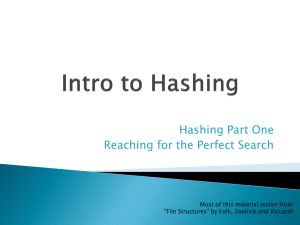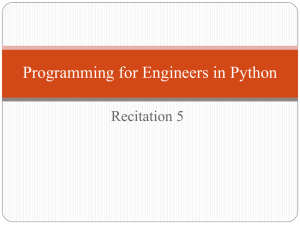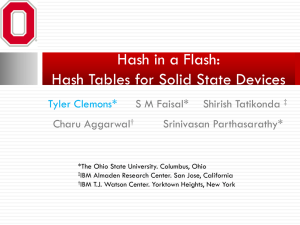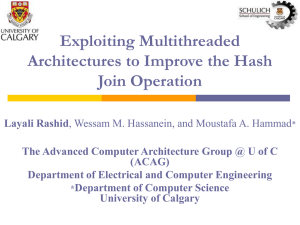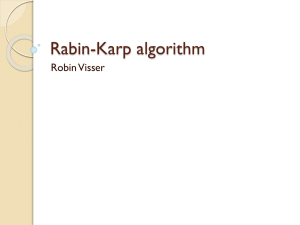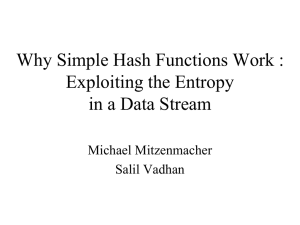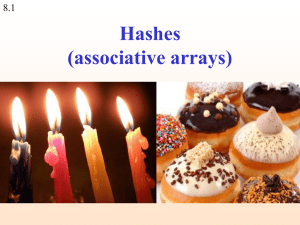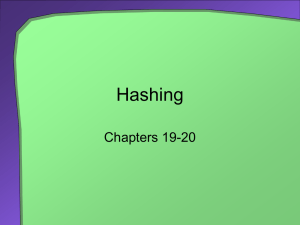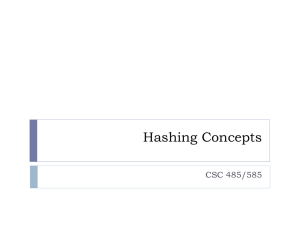Part 1 notes
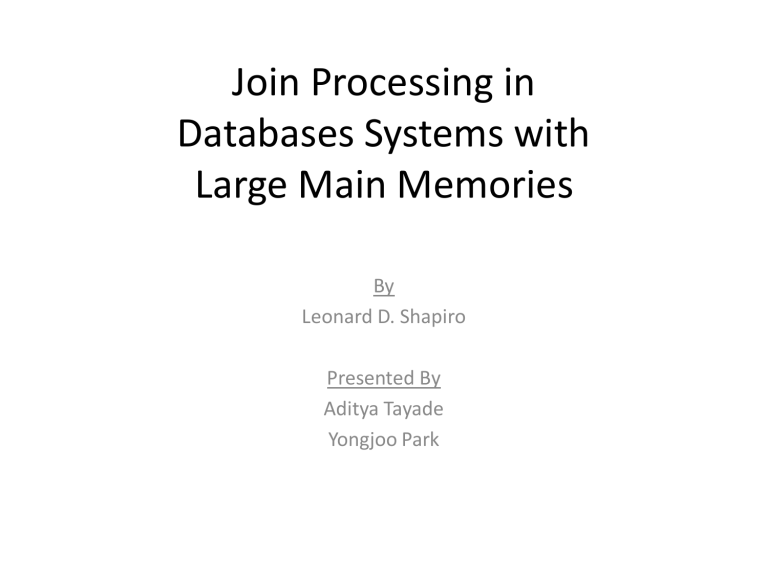
Join Processing in
Databases Systems with
Large Main Memories
By
Leonard D. Shapiro
Presented By
Aditya Tayade
Yongjoo Park
Motivation make the most of what you have
• Joins tend to be one of the most costly operations.
• Proposing new algorithms which use the large memories at our disposal.
• Traditional algorithms (eg. Nested Loop Join) do not take the advantage of large main memories available today.
Join Algorithms
• Sort-Merge Join
• Simple Hash Join
• GRACE Hash-Join
• Hybrid Hash-Join
Notations & Assumptions
• Goal – Perform Equi-Join of relations R & S.
• Full track blocking
• |R| <= |S|
• Fixed amount of Memory is allocated upfront by the Proc.
Manager and the DB process knows how much it is.
Sort-Merge Join
• Sort (using k-way merge) & then check for match of join parameters over the sorted o/p.
1) Produce runs of S ,move them to disk and then produce runs of R.
2) Merge R & S concurrently. Check for match over the output.
Sort Merge Join
• Memory |M| assumed to be at least sqrt(|S|)
• At least distinct runs of each S and R.
• Since one input buffer required per run, our sqrt(|S|) assumption is still valid.
The Total Cost
The Hashing Approach
• Classical Approach – Build a Hash Table for R (as it is smaller among the two). Compare hashed values of each S tuple with the hashed R values.
• Works fine is hash of R fits in the memory. All the following algorithms try to propose a way out of this limitation.
• Define buckets H i and S i of hashed values and the corresponding R which map into.
i
• Join the individual buckets.
Simple Hash Join
Algorithm
• Performs well only when |R| ~ |M|
• Try only one bucket at a time.
• If not, then multiple disk r/w occur which leads to bad performance.
Simple Hash Join
Algorithm
• Performs well only when |R| ~ |M|
• If not, then multiple disk r/w occur which leads to bad performance.
Simple Hash Join
Algorithm
• Performs well only when |R| ~ |M|
• If not, then multiple disk r/w occur which leads to bad performance.
A phase of Simple Hash Join
Simple Hash Join
• A = , the number of passes to execute
• The cost function –
Simple Hash Join
• A = , the number of passes to execute
• The cost function –
Simple Hash Join
• A = , the number of passes to execute
• The cost function –
GRACE Hash Join
• Build all the hash partitions concurrently.
• Equal sized partitions of R are made.
• Memory availability assumed to be at least .
• The algorithm
• Choose a hash bucket such that R is partitioned into partitions, each one of approximately equal size. Allocate output buffers, one each for each partition of R.
• Scan R. Hash each tuple and place it in the appropriate output buffer.
When an output buffer fills, it is written to disk. After R has been completely scanned, flush all output buffers to disk.
• Scan S. Use same hash function which was used for R and repeat the process in previous step.
• Read R i into memory and build a hash table for it.
• Hash each tuple of S i with same hash function used previously and probe for a match. If match exists, output tuple in result, move on to the next tuple.
Phase 1
Phase 2
GRACE Hash Join
• Memory is indeed sufficient. Each R i is of size
Since F is the fudge factor, hash table size is
• Cost Function –
Hybrid Hash Join
• Midway between GRACE-Join & Simple-Hash.
• Number of partitions fixed to B.
• B blocks of memory used for output buffering while rest |M|-
B used to store to store hash tables.
• Hash R. If it belongs to R
0 otherwise write it to disk.
place it in hash table in memory
• Hash S. If it belong to S
0 compare it to the hash in memory otherwise write it to the disk. After this step only R
1
….R
i
&
S
0
…S i are on the disk.
• Repeat the above two steps for each R i to the disk.
& S i previously written
Hybrid Hash Join
• q = |R
0
| / |R|, fraction of R represented by R
0
.
• The cost function –
